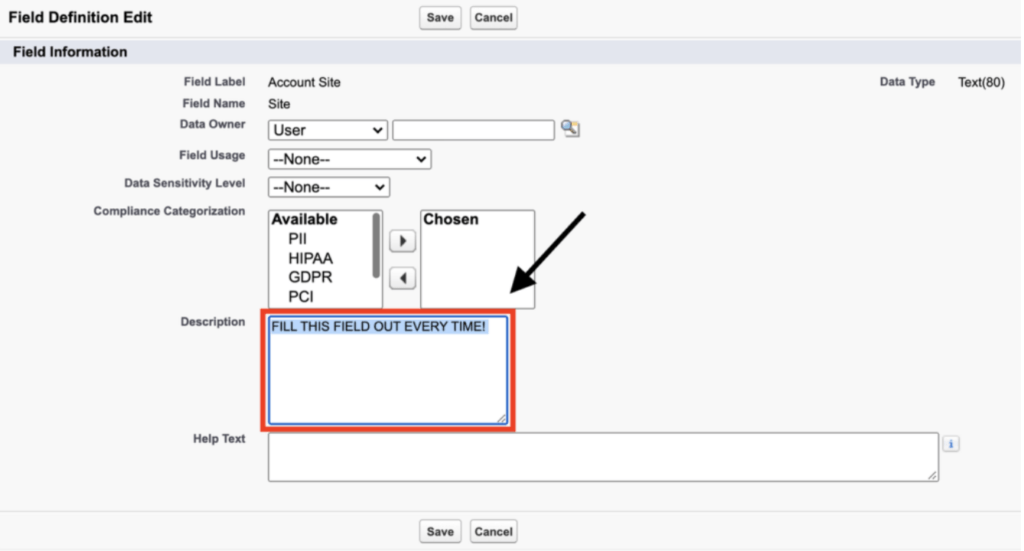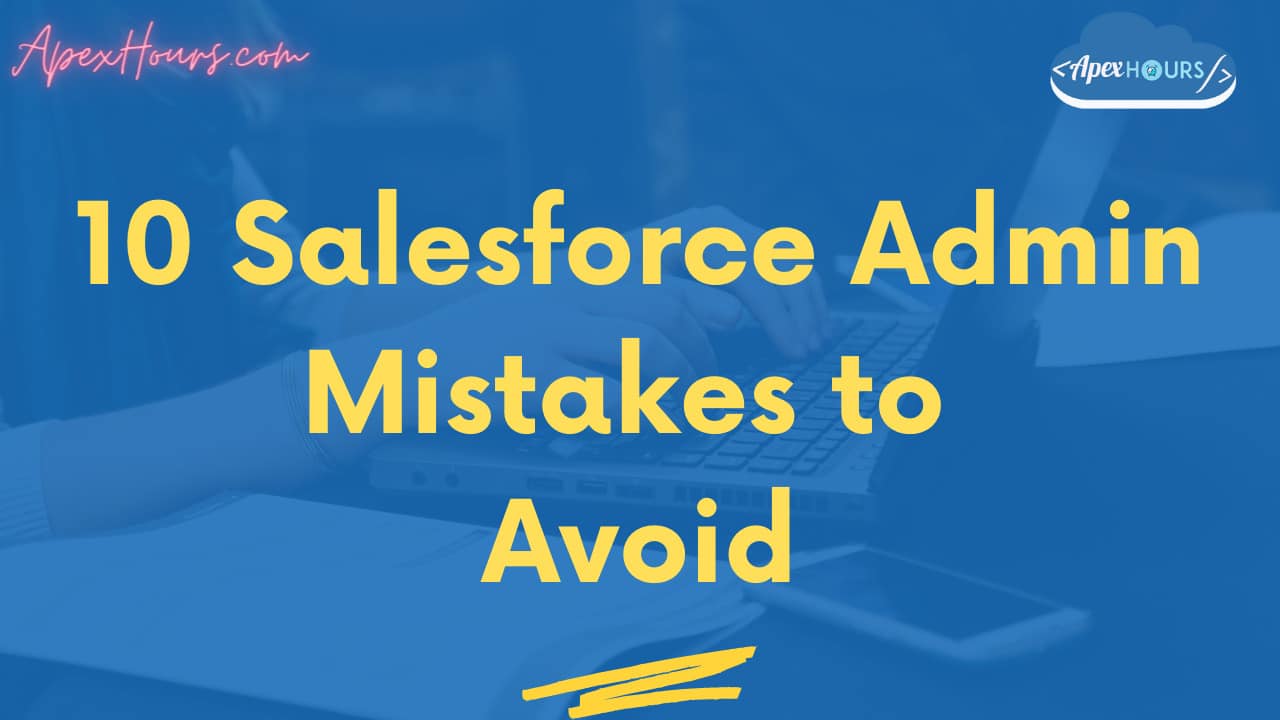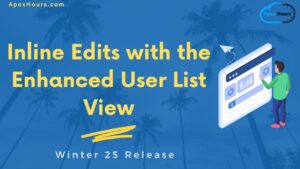What does this post cover? How to avoid common mistakes in Salesforce as an admin. Let join us and learn about 10 Salesforce Admin mistakes to avoid.
10 Salesforce Admin Mistakes to Avoid
#1 Descriptions ✏️
Nothing is worse than when you jump into an org and have to rely on old or existing co-workers to walk you through what each field was created for. Filling out the descriptions ensures that new admins to the team can figure this out without the need for your help. This will also be a big benefit later as you scale the org and audit whether or not these fields are still a need for the company.
They exist for a reason. Fill it out, ppl will thank you.
- Keep them concise
- Keep them consistent
- Keep them comprehendible

#2 Sandbox ⛱
Make this a habit early. Always, always, always, build in a sandbox first. After you test thoroughly and demo the item THEN you can use a change set and ship it into production. Why do this? Even if it’s a small change you as the admin needs to set the tone to the company that it is NEVER okay to build in production. The biggest errors I have seen in my 4 years as an admin come from the idea that “it’s just a small change”. Your company should have a production, fullcopy, partial (optional), and your personal sandbox. If you don’t have these now – push your company to implement them as soon as possible.
Sandbox is where you live, Production is where you visit.
- Test without fear
- Business is not affected
- Find bugs before production
Check out my Trailmix to learn all things sandbox 👇🏼 Become a Sandbox Power User
#3 Naming Conventions 🏷
If you are a new user and you jump into an org only to find out that none of the fields have a description, you are going to be angry. It takes much longer to ramp up as a new user when you don’t have the context. This also makes it more difficult to audit fields down the line to determine whether or not they need to be removed from the org.
When you create a field, Don’t name it “Useful field”.
- Pick a theme
- Stay consistent
- Always fill it out
Great trailhead on this which you can access here. Please Check our old post on Salesforce Naming conventions.
#4 Custom Objects 🍊
If I could point to one of the best things I have learned as an admin over the last 4 years, it would be to learn how to push back on your stakeholders. You as the admin are hired to be the expert. When you get the request to create a new object, ask the classic what, why, when, where, and how to determine if it’s an actual need.
Understand standard objects, Less = More.
- Easier to maintain
- Not reinventing the wheel
- Releases often update standard objects
#5 Profiles 👤
Profiles are there for minimal access. Open up more access with permission sets. Don’t one-off create b/c the sales VP told you to. Your goal as the admin is to attempt to keep the org as clean as you possibly can. Don’t add clutter when it’s not needed.
Utilize out of box profiles, Don’t create new ones for 1-2 ppl.
- Profiles = minimum access
- Permissions = extended access
#6 Documentation 🗂
I’ll admit that I use to be horrible at this. I now work for a company where we have to document all that we do so we can explain our actions to the company that audits us. Since being forced to do this more, I don’t know how I had success before. Check out JIRA, AHA!, Monday, Asana, or even build your own in Salesforce so you have some sort of place to manage your tickets and priority.
Write down your changes, Always have a ticket system.
- Remember context
- Have proof of signoff → Use during evaluations
#7 Testing 🧪
A mistake a made a lot when I first started was testing in one way and assuming that because this passed, there was no need to test any further. Wrong! Take the time to test in multiple ways before shipping into production.
Take the time to test, Slower = Faster.
- Improve confidence
- No production bugs
- Understand potential risks
#8 Field Audits 🔎
If you are noticing a pattern, your job as the admin is to keep things running smoothly and the org clean. The more you can organize and keep things clutter free – the better. Field trip from the appexchange is a great resource for this type of project.
Trust me on this, 500 fields on an object is plenty.
- Improve UX
- Remove clutter → Show user adoption
#9 Page Layouts 📎
I think of page layouts the same way I think of profiles. Less is more. Try to use less page layouts so that as you scale the business you can manage them without issues. Too many times have I worked for companies where there are too many for them to be managed properly.
The idea is to find things, Not lose them in the sea of fields.
- Design with users in mind
- Apply assignments appropriately
- Don’t have more than you can manage
#10 Communication 🗣
If you get nothing else out of this article at least take this as a lesson. The less you speak up with your opinion and expertise about what should or shouldn’t happen in Salesforce the worse off you are going to be. Learning to lead with a “no” vs. a “yes” is something I had to learn the hard way. Protect the system and speak up. They hired you for a reason.
Your title is Salesforce Admin, Their title is not. Act like it.
- Be the expert
- Own the system
- Push back on stakeholders
Summary
I hope this 10 Salesforce Admin Mistakes to Avoid will help you to become a good Salesforce Admin.





really informative
Share the new post please